[This post is from 14 July 2006, and there aren’t a ton of comments, but they’re pretty good. Enjoy!]
Well, it was kind of a quiet week in the Hatcher household. No new comics, but a bunch of older ones from eBay and Amazon suddenly arrived all at once. A couple of things struck me about them as being really cool, despite the fact that not a one of them was ever a fan favorite: in fact, as I recall, most comics fans of my acquaintance get downright nasty about a couple of them.
Anyway, it was all I had that was new to read this week, so that’s what I’m going to look at.
A trend at Marvel I’ve noticed over the last two years or so is that they have discovered their 1970’s backlist. Marvel from 1962-1969 has almost never been out of print, what with the old reprint books like Marvel Tales and the Masterworks series and so on and so forth. But it used to be that you got to the 70’s and suddenly there was nothing. Now, to my great delight, there are suddenly trade paperback collections of key storylines like Avengers: Celestial Madonna, Dr. Strange: A Separate Reality, The Avengers/Defenders War, Captain America: Secret Empire, Avengers: Serpent Crown, and Essential compilations of b-listers like Iron Fist and Killraven and Moon Knight. All of these had me at hello. Every time one of these books arrives I am instantly transported back to 1975 when every Monday afternoon I was riding my old Stingray up to the Sentry Market to see what new Marvel books had come in.
The latest of these to arrive is the first trade collection of Jack Kirby’s triumphant 1975 return to Captain America, Madbomb.
These books were really a hell of a lot of fun. The weird thing I noticed upon rereading them is that honestly, Kirby was just as good here as he’d ever been. It had only been an absence of four or five years, after all, though Jack’s return to Marvel was treated with the fanfare you’d expect for the Second Coming. I would certainly rank “Madbomb” with the work collected in, say, Essential Fantastic Four volume five, or even the latter part of the Cap run in Suspense.
But you’d be surprised how much the funnybook landscape can change in four years. Because readers did NOT greet Jack’s return with the enthusiasm that you might expect. The reason was that in the interim, we’d had a complete head-change in how Marvel comics were supposed to look. Comics were Relevant, Tackling Important Issues, Grown-Up. In particular, we’d had the Steve Englehart, post-Watergate, Secret Empire, disillusioned-and-renewed Cap. It was a great misfortune that this was the run that Jack Kirby had to follow, because the tone change was a little abrupt. What you see rereading that stuff today is that if the transition had come closer from Kirby’s first run to his second, or even right after Jim Steranko’s stuff, it would have been seamless. But at the time it felt like a giant step backward and readers threw a fit. In particular, I remember a huge outcry over #198, “Captain America’s Love Story,” where Cap befriended the dying daughter of the scientist who had designed the Madbomb.
It was a nice little interlude issue, actually, but readers of the time weren’t having any. A one-issue love story? What the hell? Where were the subplots? Where was Sharon Carter? What happened to the subtle emotional nuance?
Kirby was many things, but subtle absolutely wasn’t in his superhero repertoire. Kirby superhero comics were big and fast and blunt and loud. That was their great strength. With the benefit of hindsight, I think as a stand-alone piece “Madbomb” is a terrific ride and highly recommended, especially if you do a little digging online and pick it up cheap. Try Amazon. Just don’t, y’know, read it right after reading your “Secret Empire” trade collection.
*
Which brings me to the next package that arrived in the mail, another wild-and-woolly Kirby roller-coaster ride, at least in the front half of the book.
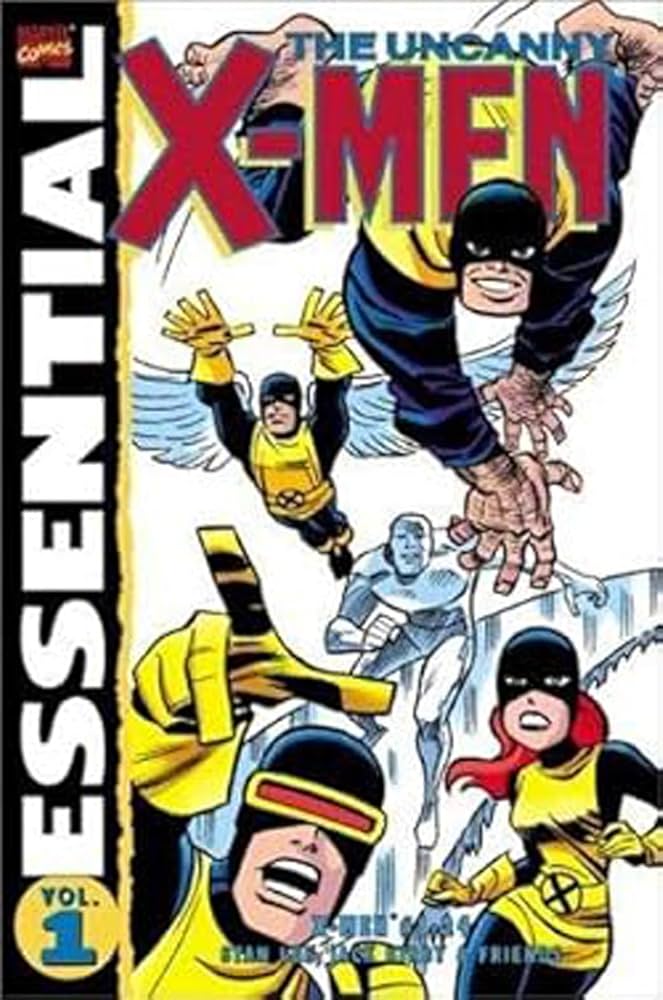
I was really curious about this because I’d never actually READ the original X-Men. I think I’ve mentioned in earlier columns that my first real foray into X-Comics was in the early seventies, with the Beast solo series and Angel and the Iceman showing up in Champions. So this was that rarity for me — a collection of old stuff that I’d never read.
These are a lot of fun, but really, read all in a row, you come away from them with the conviction that Professor X is a creepy bastard. I’ll tell you flat out, whatever ethics the guy had were retconned into his character by Chris Claremont. Because in these stories Xavier lies, he fakes injuries, he mindwipes innocents right and left, he’s basically every bit as manipulative and nasty as Magneto. Hard to believe this is the same guy that gets so upset a decade later when Jean does a little tidying up of the memories of the Pryde family during the original Phoenix Saga. On the other hand, you can’t really blame the Professor for playing hardball when his students insist on wheeling him along on all their adventures. “Hang on, Professor, I’ll lower you into the cavern!”
The interesting thing for me about this collection is that when it suddenly gets good is when Lee and Kirby LEAVE, and the book is taken over by Werner Roth and a young Roy Thomas. Now, Werner Roth isn’t going to make anyone’s Top Ten list of Great Comics Artists. But he has a nice workmanlike style that gets the job done, and he is good with conveying emotion, though his design sense is, well, non-existent. I have to admit Roth was one of the worst costume designers ever.
The stories by Roy Thomas are a nice blend of what you might call Kirby Bombast and 70’s Relevance. Thomas was really the guy that gave the book some badly-needed direction, though there are some early gems in there from Lee and Kirby as well; the first Sentinels story, in particular. But it was under Thomas that the book really started cooking with gas, and despite the fact that no fan ever really talks about Thomas and Roth when they talk about the X-Men — they tend to skip straight from Lee/Kirby to Neal Adams if they talk about the pre-Claremont books at all — but I think you really have to give the two of them, Thomas and Roth, credit for saving the X-Men as characters. Otherwise it’s very likely that they’d have faded into obscurity somewhere around 1968.
*
The next item to arrive was the second Showcase Superman collection, which I enjoyed a great deal, but you have to be in a certain frame of mind to really get into these. Because they’re sort of deranged. Superman’s world during the Weisinger years was a pretty demented place. I talked a little last week about how bent the Superman-Lois relationship was during that time, but really, the whole cast was pretty thoroughly dysfunctional, and the plots … well, there aren’t any words to describe most of them.
But every so often they’d pull out an amazing book-lengther where you could see the untapped potential that they’d really start hitting later in the decade. This collection gives us “Superman’s Return to Krypton,” which felt like high Shakespearean tragedy when I first read it at the age of nine, and there are a couple of other standouts in here as well. It does get a little numbing reading so many Bizarro stories in a row, though. The Bizarros were apparently quite a hit, because they kept going there for stories: “The World of Bizarros,” “The Son of Bizarro,” “Bizarro Meets Frankenstein,” and so on. I was never a big Bizarro fan. But on the other hand, I adored the bottle city of Kandor and that really came into its own as a plot device during this time as well. So it’s kind of a wash.
I am looking forward more to the later volumes, though, when the tone changes from situation comedy to hard SF, and it’s Edmond Hamilton and Curt Swan that get the main Superman gig. That’s the Silver Age Superman that *I* really go for; science fiction with an overlay of melancholy. Your mileage may vary.
*
Far and away my favorite arrival in this week’s mail, though, was an eBay win that I was completely surprised and delighted to get. My wife and I have been watching our DVD set of Voyage to the Bottom of the Sea, and on a whim I went looking for some of the old Gold Key comics.
I suspect there aren’t very many of you that remember the show, let alone the comics, but I have very fond memories of both. Mostly, when fans talk about the old Gold Key adventure books, they mean Doctor Solar and Magnus Robot Fighter, and that’s it. But me, I always enjoyed the Gold Key licensed books, particularly their versions of Tarzan and Dark Shadows.
This one was a little before my time, though I have a vague memory of seeing one of these in the barber shop when I was very young. It wasn’t the first comic book I ever bought, but it may well have been the first one that ever caught my eye, because if you were a science-fiction-loving kid watching TV in 1967, there were only two shows worth watching — the original Star Trek, and Voyage to the Bottom of the Sea. (Lost In Space doesn’t count because it was terrible, this was obvious even when I was six.) Star Trek did very well as a licensed property for Gold Key, hanging around on the comics racks long after the show was canceled … but Voyage was never really a big hit for them, despite subject matter that was a natural fit for comics. The Seaview was always falling afoul of dinosaurs, monsters, giant robots, and alien spaceships, not to mention countless enemy agents and mad scientists, and the occasional foray into time travel and lost underground jungles. Hell of a way to run a Navy.
Crewman Kowalski, in particular, was gassed, raygunned, and clubbed unconscious so often — he was sort of the Ensign Chekov of the Seaview — that it’s a wonder the poor guy didn’t have brain damage. Watching the show when we were kids, my brother Tom and I used to get an enormous kick out of Crewman Kowalski (usually referred to, affectionately, as simply ‘Ski.) He was sort of the Everyman, the guy who always had lines like, “Captain, you won’t believe this, but … there’s a real Tyrannosaurus out there!” Frankly, after a couple of weeks serving on Seaview I’d think you could believe anything. But I digress.
The art on these is really a treat; the GCD credits Alberto Giolitti, who I’ve never heard of, but he has a great feel for macho adventure-type stuff, with a style reminiscent of Dan Spiegle, though he’s a little weak on some of the likenesses (this is doubtless the bane of every artist who’s ever been assigned a licensed tie-in book, so I really can’t fault Mr. Giolitti for missing the mark every so often here.) Giolitti’s usual forte seemed to be Westerns, and he also was on Turok Son of Stone for a while, so maybe that’s how he got the Voyage gig — there were an awful lot of dinosaurs in the Seaview’s patrol area. He ended up doing quite a bit of Star Trek for Gold Key as well, oddly enough.
Voyage to the Bottom of the Sea only went 16 issues, with several of the later ones being reprints of the earlier ones, and I scored four of them on eBay — about thirty percent of the original run at a stroke, in other words, which is somewhat gloat-worthy. They arrived today and I am having an embarrassing amount of fun reading through them. I had completely forgotten this, but Gold Key had original backup strips in most of their licensed books, like “Brothers of the Spear” in Tarzan. Voyage To The Bottom of the Sea had one as well — this one was called “Explorers in the Unknown,” featuring the adventures of “recon spaceship” Hunter I. Like the main feature, these were mostly goofball stories but interesting art. (I wonder if it was a conscious attempt to milk the Voyage/Star Trek connection all us kids were making at the time.) The art credit on the backup strips, again from the GCD, was one Nevio Zaccara; no idea who he is either, though he has quite a few Gold Key credits, mostly SF. There are also little one-page text features about “Undersea Treasures” and so on in each issue. A lot of bang for your twelve cents back then.
So that was my week in comics. Taken as a whole, though this was mostly just coincidence, this cavalcade of old-school craziness did serve to remind me that as seriously as we like to take our comics these days, there’s a kind of fun to be had in just surrendering to the general silliness of the whole thing that you don’t see too much any more. You just don’t find anything as deranged as “Madbomb: Screamer in the Brain!” or “Prisoners of the Jelly Planet” in comics today, at least not without somebody being all smirky and ironic about it. Shame really, because comics used to do that stuff better than anyone else.
See you next week.

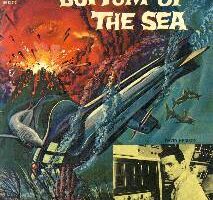
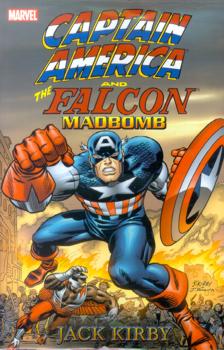
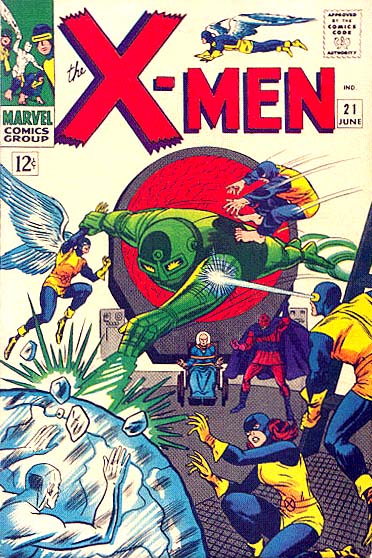
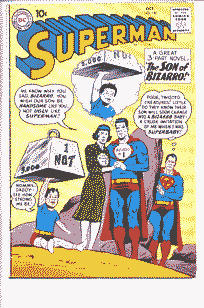
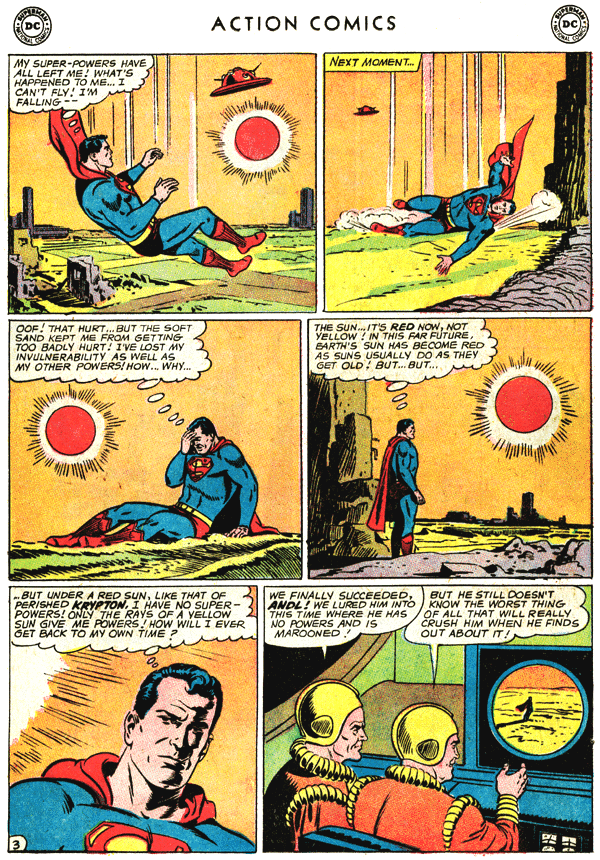
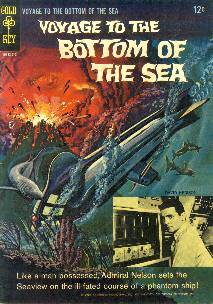
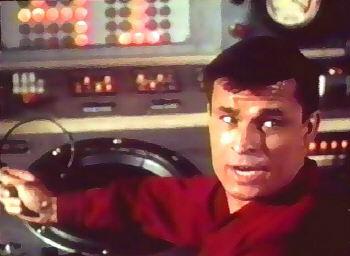
I picked up the omnibus of Kirby’s 70s Cap recently, but haven’t dug into it yet. Now that I have almost all of it, I’d love to do a big chronological 70s Kirby read.
I have the first Showcase Superman, bought right when it came out, and I don’t think I ever finished it. I love the goofy ideas, but it’s a lot to digest all at once, and every story feels like it’s about Superman’s ridiculously complicate scheme to teach someone a lesson.
It’s when Kirby leaves that Lee gives us the Juggernaut story, then the Sentinels, then a two-parter with Magneto (it creeped me out as a kid). I agree Thomas did good work — part of it is, he seems to connect with them better as a group of teens than Stan or Jack could do.
Madbomb? Meh. Just one more “why do people think Kirby is so great?” book for me at the time — and as you know from my Silver Age Reread posts, it’s not like I was crazy about relevant stories.
Tried watching Voyage a couple of times. Found it boring.
in the UK, I encountered the original X-men in a Marvel Digest series (small black and white usually 52 pages (except for one month extra long)
I got “Star Heroes Pocket Book” which was reprinting Micronauts (continuing on from where Star Wars weekly left off – issue 9 perhaps) and Battlestar Galactica (from issue 6). They continued those 2 series up to the 100 page issue 9.
And then issue 10 it changed to instead reprint X-Men from the beginning changing the title with issue 12 and continued through to issue 28 where the whole line was cancelled ending the X-men reprints with what had been issue 38 (a massive cliffhanger) I had to track down older Marvel UK comios to find out the resolution (oddly, a previous Marvel UK comic with the original X-Men ended at exactly the same point, however, then the reprints had been continued in another title)
overall, I felt Roy Thomas’ first run on the X-Men was fairly good but nowhere near as good as his second run
I’ll just mention that, on the subject of the X-Men, Brian has finally resumed his countdown. He has now featured my number 7 pick, my number 6 pick and my number 5 pick in that order.
What’s the chances are my number 4 pick will turn up next?
(answer – practically nil, though my top 3 choices should appear and my number 10 could make it…)
I’m surprised that Greg was unfamiliar with Alberto Giolitti; he was one of Western/Gold Keys mainstays, especially Turok. He also worked on Greg’s beloved Star Trek comics, as well as Tarzan and the Tonto comics.
The Madbomb story is great and you can kind of see, if you read between the lines, that it is Kirby’s essay on nuclear weapons and “doomsday” weapons. He definitely seemed affected by The Bomb and the power there, not to mention the power to destroy ourselves. You can say it is more simplistic than Englehart; but, that is really underestimating Kirby. He worked in broader allegories, but his thinking was no less deep than Englehart’s….plus, he had the life experience, in a war, in combat, to formulate his ideas, rather than as more abstract concepts.